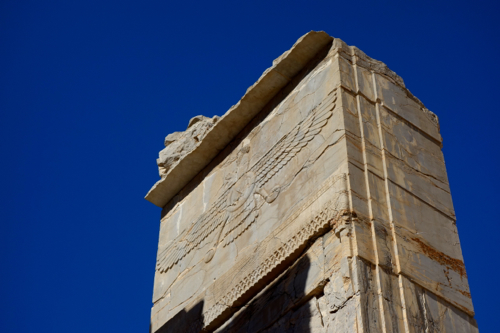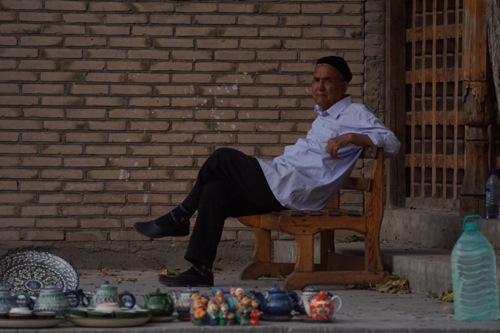Surrounded by spectacular Karst mountains and spread over two rivers and four lakes, Guilin certainly made an attractive start to our Chinese adventure.
The rivers and lakes are joined by a series of canals. Some of these were started over a thousand years ago during the Han Dynasty.
In fact Guilin has a history dating back to 300 BC.
With so much water it’s not surprising that bridges are a big feature of the cityscape.
Guilin was all but destroyed by the Japanese during WWII and there has a been a lot of reconstruction since then. The bridges were originally planned to be Chinese in design but that was regarded as impractical, as they are too steep for contemporary vehicles.
The answer was to design each bridge as a copy of fa amous bridge around the world. There is Neoclassical Roman, Classical Venetian, San Francisco’s Golden Gate and London Bridge. There’s even a bridge that goes nowhere, that’s not even based on a bridge at all but a replica of the Arc de Triomphe in Paris.
During the day the space beneath many of the bridges becomes impromptu rehearsal rooms for the local Guilin musicians and singers. The spounds of flute and Chinese opera can often be heard as you walk along the river banks.
The other unique feature of the Guilin landscape is the surrounding Karst mountains. These geological formations are so important that UNESCO have set up a centre for Karst research in Guilin. Building regulations in Guilin prohibits the construction of tall buildings, within the city centre, so as not to interfere with the views of these, all important, tourist attractions.
So important are the karst mountains, and the unique landscape that they create, that heavy industry has been moved out of Guilin. The result is a green, pollution free city that relies on tourism for its survival.
We very quickly discovered from our tour guide John, that due of the sheer size of the population, everything in China is a measured in millions. For example, Catholics make up a tiny minority of all religions, yet there are over 10 million of them. We also discovered that there are four million farmers living in the mountains outside of Guilin.
This is a very rural area and homes are built three stories high to accommodate three generations of one family.
The old people live on the ground floor because they can’t climb the stairs. The middle generation live on level two and their kids live on the top floor. That way they have to go past their parents if they want to leave the house.
John took us on a city tour of Guilin, however it was more a tour of natural sites close to the city than a tour of the city itself. That we did the day and evening before, walking around the lakes, rivers and canals.
Our first stop on the City Tour was the Reed Fute Caves. These are enormous limestone caves, set in a karst mountain, with stalagmites and stalagtites so thin that they are reminiscent of flute reeds. In fact we found that imagination, in interpreting shapes, was part of the game tourist are asked to play in this area. John was constantly asking us to see an owl here or a flower there in the limestone formations.
The cave tour concluded with a rather amazing sound and light show. Projections onto the ceiling of the cave were used to visualise its geological history.
Elephant Trunk Cave was our next stop, again we were asked to imagine an elephant drinking from the river.
This wasn’t hard as the similarity was very obvious.
Our final activity for the day was to climb to the top of Fubo Hill to get a good view of Guilin. It was a good view and a hard climb, especially in the 30 degree heat with 80 percent humidity.
Electric scooters are the main mode of transport for the Guilin locals. They are so quiet that you can’t hear them coming, so we very quickly learnt that traffic drives on the right in China. Well that’s the plan, most of the time they drive on whatever side they like.
The next day we took the Li River Cruise to Yangshuo. The river winds its way through a spectacular karst mountain landscape, the sort depicted on the 20 Yuen note.
The skies were typically hazy but this just added to the atmosphere of the area.
As soon as we arrived in Yangshuo John hired three bikes so we could go cycling around the countryside. Without hesitation we were launched into the middle of the Yangshuo traffic. This was light compared to what we had experienced in Guilin and nothing compared to what we had been told about in Beijing.
We very quickly escaped the the urban area and found ourselves in rural China. We visited an old farmhouse and a lake where the locals go punting on bamboo rafts.
Many of the tourist activites are run by the local farmers. They are the only group who own land. The plots are so small they can’t support the family, so they supplement the farm income with other ventures.
After two hours in 30 degree heat we were exhausted – and thirsty. We found a quiet bar that served cold beer and rested our tired legs and numb bums.
In the evening we were taken to see a local performance. ‘Impressions of Sanjie Liu’ is a spectacular open air live show, set against the backdrop of the Li River and surrounding kasrst mountains.
Six hundred local children and farmers perform on this picturesque outdoor stage. It’s reminiscent of an Olympic games opening ceremony. This isn’t surprising considering the director of this production also created the opening extravaganza for the Beijing games.












